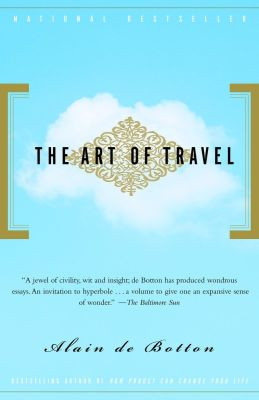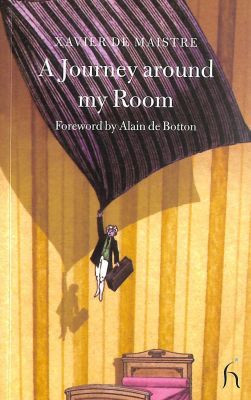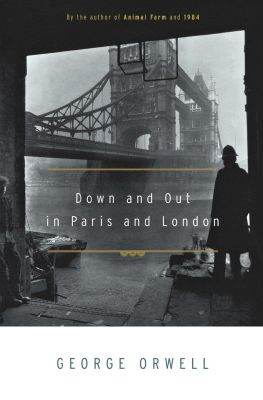The Best Travel Literature Books offer immersive experiences and ignite your passion for exploring new horizons. At SIXT.VN, we understand the allure of travel and want to enhance your journey to Vietnam. Explore captivating destinations and unlock unique travel experiences through inspiring literature.
1. What Makes a Travel Literature Book Stand Out?
A standout travel literature book should transport you to another place. It should provide insights into different cultures and inspire you to embark on your own journey. A compelling narrative, vivid descriptions, and personal reflections are essential.
Travel literature books stand out due to their ability to transport readers beyond the confines of their everyday lives. These books offer a unique blend of storytelling, cultural insights, and personal reflections that can ignite a passion for exploration. A compelling narrative is crucial; it should captivate the reader from the first page and maintain their interest throughout the journey. Vivid descriptions are equally important, allowing readers to visualize the landscapes, cities, and people being described.
Books that weave in historical context, like Freya Stark’s “The Valleys of the Assassins,” offer a deeper understanding of the regions and cultures explored. Personal anecdotes and reflections from the author create a sense of intimacy and connection, making the journey more relatable.
Ultimately, the best travel literature books are those that inspire readers to seek out their own adventures, whether it’s a journey to a faraway land or a new perspective on their own surroundings. For travelers planning a trip to Vietnam, reading travel literature can provide valuable insights and inspiration, helping them to tailor their experiences and appreciate the country’s rich culture and history.
2. Can “The Art of Travel” by Alain de Botton Change Your Perspective on Traveling?
Yes, “The Art of Travel” by Alain de Botton can change your perspective on traveling by exploring the motivations, expectations, and experiences associated with travel. It encourages readers to think deeply about why they travel and how to appreciate the journey itself.
Alain de Botton’s “The Art of Travel” is more than just a guide; it’s a philosophical exploration of why we travel and how we can derive more meaning from our experiences. De Botton challenges the often-superficial approach to travel, encouraging readers to delve deeper into their motivations and expectations. He suggests that travel is not just about seeing new places but also about seeing ourselves and the world in new ways.
The book examines various aspects of travel, from the anticipation and planning stages to the actual experiences and the reflections that follow. De Botton uses examples from literature, art, and philosophy to illustrate his points, making the book both insightful and engaging. He discusses the importance of observation, the value of solitude, and the challenges of cultural adaptation, providing readers with a framework for understanding their own travel experiences.
One of the key themes in “The Art of Travel” is the idea that travel can be a form of self-discovery. By stepping outside of our comfort zones and encountering new environments, we can gain fresh perspectives on our lives and our place in the world. De Botton encourages readers to embrace the unexpected, to be open to new experiences, and to find beauty in the ordinary.
For travelers planning a trip to Vietnam, “The Art of Travel” can be particularly valuable. It can help you approach your journey with a more thoughtful and intentional mindset, allowing you to appreciate the country’s rich culture, stunning landscapes, and unique customs on a deeper level. It can also inspire you to seek out authentic experiences, connect with locals, and reflect on your own personal growth.
 the art of travel book cover (1)
the art of travel book cover (1)
3. How Does Olivia Laing’s “To The River” Explore Themes of Memory and Identity?
Olivia Laing’s “To The River” intricately weaves personal experiences with the history of the River Ouse, examining how landscapes evoke memories and shape identity. It’s a contemplative journey that explores the connection between self and environment.
In “To The River,” Olivia Laing embarks on a journey along the River Ouse, using the river as a metaphor for the flow of memory and the shaping of identity. Laing combines personal memoir with historical and cultural analysis, creating a rich tapestry of narrative that explores the complex relationship between self and environment.
The book delves into the history of the River Ouse, from its ancient origins to its modern-day significance. Laing examines the lives of those who have been touched by the river, including Virginia Woolf, who tragically drowned herself in its waters. By interweaving these historical narratives with her own personal experiences, Laing explores how the past seeps into the present, shaping our perceptions and influencing our identities.
One of the key themes in “To The River” is the idea that landscapes can serve as repositories of memory. Laing argues that places hold echoes of past events and experiences, and that by engaging with these places, we can gain a deeper understanding of ourselves and our history. The River Ouse, in particular, becomes a symbol of the continuous flow of time and the interconnectedness of all things.
Laing also explores the ways in which our identities are shaped by our relationships with others. She reflects on her own experiences of love, loss, and loneliness, and how these experiences have influenced her sense of self. By sharing her vulnerabilities and personal struggles, Laing creates a sense of intimacy and connection with the reader, inviting them to reflect on their own journeys of self-discovery.
For travelers planning a trip to Vietnam, “To The River” can offer a valuable reminder of the importance of connecting with the local environment and culture. By taking the time to explore the country’s rivers, mountains, and cities, you can gain a deeper appreciation of its history, its people, and its unique identity. And by reflecting on your own personal experiences, you can create lasting memories and enrich your own sense of self.
4. What Lessons Can You Learn from “A Journey Round My Room” by Xavier de Maistre?
“A Journey Round My Room” by Xavier de Maistre teaches us to find wonder and adventure in our immediate surroundings. It’s a reminder that travel doesn’t always require going far, and that appreciating the present is invaluable.
Xavier de Maistre’s “A Journey Round My Room” is a charming and insightful exploration of the concept of travel. Written in 1794 while the author was confined to his room for 42 days, the book recounts his imaginative journey through his immediate surroundings. Despite its limited setting, the book is full of adventure, discovery, and philosophical musings.
One of the key lessons of “A Journey Round My Room” is that travel doesn’t always require going far. De Maistre demonstrates that it’s possible to find wonder and excitement in even the most familiar environments. By paying close attention to the details of his room, he uncovers a wealth of new experiences and insights.
The book also teaches us the importance of appreciating the present moment. De Maistre encourages readers to slow down, observe their surroundings, and find joy in the simple things in life. He shows that it’s possible to be content and fulfilled even when we’re not able to travel to exotic destinations.
Another valuable lesson of “A Journey Round My Room” is the power of imagination. De Maistre uses his imagination to transform his room into a vast and varied landscape, full of hidden treasures and unexpected adventures. He reminds us that our minds are capable of creating entire worlds, and that we can use our imagination to enrich our lives and expand our horizons.
For travelers planning a trip to Vietnam, “A Journey Round My Room” can serve as a reminder to appreciate the journey itself, not just the destination. It can encourage you to be more mindful of your surroundings, to connect with the local culture, and to find joy in the unexpected moments that arise along the way. Whether you’re exploring the bustling streets of Hanoi or the serene rice paddies of Sapa, remember to take the time to savor the experience and appreciate the beauty of the present moment.
 a journey around my room book cover maistre
a journey around my room book cover maistre
5. Why is “Three Men in a Boat” by Jerome K. Jerome Considered a Hilarious Travel Book?
“Three Men in a Boat” by Jerome K. Jerome is considered a hilarious travel book because of its witty writing, comical mishaps, and relatable portrayal of friendship amid the challenges of a boating trip on the Thames. Its enduring humor makes it a classic.
Jerome K. Jerome’s “Three Men in a Boat” has delighted readers for over a century with its witty writing, comical mishaps, and relatable portrayal of friendship. The book recounts the adventures of three friends and a dog as they embark on a boating trip along the River Thames. What begins as a leisurely holiday quickly descends into a series of hilarious mishaps, as the friends struggle to navigate the boat, pitch a tent, and cook a meal.
One of the reasons why “Three Men in a Boat” is so funny is its use of irony and satire. Jerome pokes fun at the pretentiousness of Victorian society, the incompetence of the characters, and the absurdity of their situation. He also uses witty wordplay and humorous anecdotes to keep readers entertained.
Another key element of the book’s humor is its relatable portrayal of friendship. The three friends, Jerome, George, and Harris, are all flawed and imperfect individuals, but they care about each other and support each other through thick and thin. Their camaraderie and banter create a sense of warmth and familiarity that readers can easily connect with.
The humor in “Three Men in a Boat” is also timeless. Despite being written in the late 19th century, the book’s themes of friendship, adventure, and the challenges of travel remain relevant today. Readers of all ages and backgrounds can appreciate the book’s witty writing and its lighthearted take on the human experience.
For travelers planning a trip to Vietnam, “Three Men in a Boat” can serve as a reminder to embrace the unexpected and to find humor in the face of adversity. Travel is not always smooth sailing, and there will inevitably be challenges and setbacks along the way. But by maintaining a sense of humor and a positive attitude, you can turn these challenges into opportunities for growth and adventure.
6. What Kind of Courage Did Dervla Murphy Show in “Full Tilt: Ireland to India with a Bicycle”?
Dervla Murphy demonstrated extraordinary courage in “Full Tilt: Ireland to India with a Bicycle” through her solo journey, resilience in facing hardships, and unwavering determination to explore the world on her own terms, challenging societal norms.
Dervla Murphy’s “Full Tilt: Ireland to India with a Bicycle” is a testament to the power of courage, resilience, and unwavering determination. In 1963, Murphy embarked on a solo bicycle journey from her home in Ireland to India, a feat that was both physically and mentally demanding. Throughout her journey, she faced numerous challenges, including harsh weather conditions, dangerous terrains, and cultural barriers.
One of the most remarkable aspects of Murphy’s journey was her decision to travel alone as a woman. In a time when solo female travel was rare, Murphy defied societal norms and set out to explore the world on her own terms. She faced skepticism and prejudice from many people she encountered along the way, but she refused to let their negativity deter her.
Murphy also demonstrated incredible resilience in the face of hardship. She endured numerous physical challenges, including exhaustion, illness, and injuries. She also faced emotional challenges, such as loneliness, fear, and self-doubt. Despite these obstacles, she persevered and continued on her journey, fueled by her passion for adventure and her belief in herself.
Another key element of Murphy’s courage was her willingness to embrace the unknown. She ventured into unfamiliar territories, encountered new cultures, and faced unpredictable situations. She didn’t always know what to expect, but she remained open-minded and adaptable, allowing herself to be surprised and transformed by her experiences.
For travelers planning a trip to Vietnam, “Full Tilt” can serve as an inspiration to embrace their own courage and to push beyond their comfort zones. Traveling to a new country can be daunting, but it can also be incredibly rewarding. By taking risks, embracing the unknown, and challenging their own limitations, travelers can create lasting memories and transform their lives.
 full tilt ireland to india dervla murphy (1)
full tilt ireland to india dervla murphy (1)
7. What Makes Freya Stark’s “The Valleys of the Assassins” a Compelling Read?
Freya Stark’s “The Valleys of the Assassins” captivates with its historical exploration, cultural insights, and Stark’s courageous solo journey through remote Persian landscapes, offering a unique blend of adventure and literary richness.
Freya Stark’s “The Valleys of the Assassins” is a captivating read that combines historical exploration, cultural insights, and personal adventure. In 1931, Stark embarked on a solo journey through the remote and treacherous landscapes of Luristan, a mountainous region nestled between Iraq and present-day Iran. Her goal was to explore the ancient valleys and uncover the secrets of the mysterious Assassins, a medieval Islamic sect known for their political assassinations.
One of the things that makes “The Valleys of the Assassins” so compelling is Stark’s ability to transport readers to another time and place. She vividly describes the rugged landscapes, the colorful cultures, and the fascinating history of the region. She also shares her personal experiences and reflections, offering a unique perspective on the challenges and rewards of solo travel.
Stark’s writing is both elegant and insightful. She weaves together historical facts, cultural observations, and personal anecdotes to create a rich and nuanced narrative. She also has a keen eye for detail, capturing the beauty and complexity of the world around her.
Another key element of the book’s appeal is Stark’s courageous spirit. She ventured into dangerous and unfamiliar territories, faced numerous challenges, and never wavered in her determination to explore the unknown. Her bravery and resilience serve as an inspiration to readers, encouraging them to pursue their own dreams and to challenge their own limitations.
For travelers planning a trip to Vietnam, “The Valleys of the Assassins” can offer a valuable reminder of the importance of cultural sensitivity and respect. Stark approached her travels with an open mind and a willingness to learn from others. She sought to understand the perspectives of the local people, and she treated them with kindness and compassion. By following her example, travelers can create meaningful connections with the people they meet and gain a deeper appreciation of the world’s diverse cultures.
8. How Does George Orwell’s “Down and Out in Paris and London” Depict Poverty and Survival?
George Orwell’s “Down and Out in Paris and London” provides a raw and unflinching depiction of poverty and survival, offering insights into the harsh realities faced by the homeless and the working poor in these cities.
George Orwell’s “Down and Out in Paris and London” is a powerful and unflinching depiction of poverty and survival in two of the world’s most iconic cities. Based on Orwell’s own experiences, the book recounts his struggles to make ends meet while working as a dishwasher in Paris and living as a tramp in London.
One of the things that makes “Down and Out in Paris and London” so compelling is its raw honesty. Orwell doesn’t shy away from the harsh realities of poverty, describing in detail the squalor, hunger, and humiliation that he and his fellow down-and-outs endured. He also exposes the social inequalities and injustices that perpetuate poverty, highlighting the systemic barriers that prevent people from escaping their circumstances.
Orwell’s writing is both vivid and visceral. He captures the sights, sounds, and smells of the slums, bringing the reader face-to-face with the harsh realities of life on the margins. He also portrays the characters he meets with empathy and compassion, revealing their humanity despite their difficult circumstances.
“Down and Out in Paris and London” is not just a story of poverty and survival; it’s also a story of resilience and hope. Despite the challenges he faces, Orwell never loses his spirit or his determination to make a better life for himself. He finds camaraderie and support among his fellow down-and-outs, and he learns valuable lessons about the human condition.
For travelers planning a trip to Vietnam, “Down and Out in Paris and London” can offer a valuable reminder of the importance of empathy and compassion. While Vietnam is a beautiful and welcoming country, it’s also a country where poverty and inequality persist. By being mindful of the challenges faced by those less fortunate, travelers can make a positive impact on the communities they visit and contribute to a more just and equitable world.
 down and out in paris and london george orwell book cover (1)
down and out in paris and london george orwell book cover (1)
9. What Makes “An Illustrated Journey” by Danny Gregory Unique Among Travel Books?
“An Illustrated Journey” by Danny Gregory stands out for its celebration of visual journaling, showcasing personal sketches and artwork from traveling artists, inspiring readers to document their own journeys creatively.
Danny Gregory’s “An Illustrated Journey” is a unique and inspiring travel book that celebrates the power of visual journaling. Unlike traditional travel narratives that rely on words to convey experiences, “An Illustrated Journey” showcases the personal sketches and artwork of traveling artists from around the world.
One of the things that makes this book so special is its emphasis on creativity and self-expression. The artists featured in “An Illustrated Journey” use their sketchbooks to document their travels in a way that is both personal and authentic. They capture the sights, sounds, and emotions of their experiences through drawings, paintings, and collages, creating a visual record that is both beautiful and meaningful.
The book also highlights the importance of slowing down and observing the world around us. The artists in “An Illustrated Journey” take the time to really see the places they visit, paying attention to the details that often go unnoticed. They capture the essence of a place through their artwork, inviting readers to see the world in a new light.
“An Illustrated Journey” is not just a book for artists; it’s a book for anyone who wants to connect with their creativity and explore the world in a more meaningful way. It encourages readers to pick up a sketchbook and start documenting their own journeys, whether they’re traveling to far-flung destinations or simply exploring their own neighborhoods.
For travelers planning a trip to Vietnam, “An Illustrated Journey” can serve as an inspiration to create their own visual journals. Whether you’re sketching the bustling streets of Hanoi or painting the serene landscapes of Ha Long Bay, visual journaling can help you connect with your experiences on a deeper level and create lasting memories of your travels.
10. What Themes Does “Walking in Clouds” by Kavitha Yaga Bugging Explore?
“Walking in Clouds” by Kavitha Yaga Bugging explores themes of perseverance, spirituality, and personal transformation through a pilgrimage to Mount Kailash and Lake Mansarovar, offering insights into the challenges and rewards of such journeys.
Kavitha Yaga Bugging’s “Walking in Clouds” is a travel memoir that explores themes of perseverance, spirituality, and personal transformation. The book recounts Bugging’s pilgrimage to Mount Kailash and Lake Mansarovar, two sacred sites in Tibet that are revered by Hindus, Buddhists, Jains, and Bonpos.
One of the central themes of “Walking in Clouds” is the challenge of physical and mental endurance. The journey to Mount Kailash and Lake Mansarovar is arduous, requiring travelers to trek through high-altitude terrain, endure harsh weather conditions, and overcome numerous obstacles. Bugging describes her own struggles with exhaustion, altitude sickness, and self-doubt, offering a candid account of the challenges of undertaking such a demanding pilgrimage.
The book also explores the theme of spirituality. Bugging reflects on her own beliefs and practices, and she examines the ways in which the pilgrimage to Mount Kailash and Lake Mansarovar has deepened her understanding of herself and the world around her. She also explores the spiritual significance of the sacred sites, describing the rituals, ceremonies, and traditions that are associated with them.
Another key element of “Walking in Clouds” is the theme of personal transformation. Bugging undergoes a significant personal transformation during her pilgrimage, learning valuable lessons about resilience, compassion, and the importance of living in the present moment. She emerges from the journey with a renewed sense of purpose and a deeper appreciation for the beauty and complexity of life.
For travelers planning a trip to Vietnam, “Walking in Clouds” can offer a valuable reminder of the importance of connecting with the local culture and respecting the spiritual beliefs of others. Vietnam is a country with a rich and diverse spiritual heritage, and travelers can learn a great deal by visiting temples, pagodas, and other sacred sites. By approaching these sites with an open mind and a respectful attitude, travelers can gain a deeper understanding of Vietnamese culture and connect with their own spirituality.
11. What is the Significance of “A Month In The Country” by J. L. Carr?
“A Month In The Country” by J. L. Carr is significant for its exploration of healing, simplicity, and the transient nature of beauty and life through the eyes of a war veteran in rural England, offering a reflective and poignant experience.
J. L. Carr’s “A Month In The Country” is a beautifully written novel that explores themes of healing, simplicity, and the transient nature of beauty and life. Set in rural England in the 1920s, the book tells the story of Tom Birkin, a war veteran who arrives in a small Yorkshire village to restore a medieval mural in the local church.
One of the central themes of “A Month In The Country” is the process of healing. Birkin is a wounded veteran, both physically and emotionally, and he finds solace and healing in the simple rhythms of village life. As he painstakingly restores the mural, he also begins to restore his own sense of self, finding peace and purpose in his work.
The book also explores the theme of simplicity. Birkin lives a simple life in the village, residing in the church’s bell tower and spending his days working on the mural. He finds joy in the small things, such as the beauty of the countryside, the kindness of the villagers, and the satisfaction of his work.
Another key element of “A Month In The Country” is its exploration of the transient nature of beauty and life. The mural that Birkin restores is a work of art that has been hidden for centuries, and its rediscovery is a moment of great beauty. However, the book also reminds us that beauty is fleeting and that all things must eventually pass.
For travelers planning a trip to Vietnam, “A Month In The Country” can offer a valuable reminder of the importance of slowing down and appreciating the simple things in life. Vietnam is a country of great beauty, but it’s also a country that can be overwhelming and chaotic. By taking the time to slow down and connect with the local culture, travelers can find moments of peace and tranquility amidst the hustle and bustle of everyday life.
12. How Does “A Simple Life” by Mary-Jane Houlton Inspire Off-Grid Living?
“A Simple Life” by Mary-Jane Houlton inspires off-grid living by detailing the practical steps and personal rewards of creating a self-sufficient, eco-friendly home in the French countryside, encouraging readers to embrace a more sustainable lifestyle.
Mary-Jane Houlton’s “A Simple Life” is a memoir that inspires readers to consider the possibility of off-grid living. The book recounts Houlton’s experiences of buying a wooden cabin in the French countryside and creating a self-sufficient, eco-friendly home.
One of the things that makes “A Simple Life” so inspiring is its practicality. Houlton provides detailed descriptions of the steps she and her husband took to create their off-grid home, including installing a compostable toilet, setting up a water supply, and generating their own electricity. She also shares tips and advice on how to live sustainably and reduce your environmental impact.
The book also highlights the personal rewards of off-grid living. Houlton describes the joy of living in harmony with nature, the satisfaction of being self-sufficient, and the sense of community that she has found in her rural surroundings. She also reflects on the challenges of off-grid living, such as the need for constant maintenance and the occasional feelings of isolation.
“A Simple Life” is not just a book for those who are considering off-grid living; it’s a book for anyone who wants to live a more sustainable and fulfilling life. It encourages readers to think about their relationship with the environment and to make choices that are in alignment with their values.
For travelers planning a trip to Vietnam, “A Simple Life” can offer a valuable reminder of the importance of responsible tourism. Vietnam is a country with a rich natural heritage, and it’s important for travelers to be mindful of their impact on the environment. By making sustainable choices, such as staying in eco-lodges, supporting local businesses, and reducing their waste, travelers can help to protect Vietnam’s natural beauty for future generations.
13. What Can You Expect from “An Innocent Abroad: Life-Changing Trips from 35 Great Writers”?
“An Innocent Abroad: Life-Changing Trips from 35 Great Writers” offers diverse travel experiences and reflections from renowned authors, providing adventure, cultural insights, and a deeper understanding of the transformative power of travel.
“An Innocent Abroad: Life-Changing Trips from 35 Great Writers” is an anthology that offers readers a diverse collection of travel experiences and reflections from some of the world’s most renowned authors. Edited by Don George, this book explores the transformative power of travel and the ways in which it can shape our perspectives and change our lives.
One of the things that makes “An Innocent Abroad” so compelling is its variety. The book features essays, stories, and excerpts from a wide range of writers, including Mark Twain, Ernest Hemingway, Elizabeth Gilbert, and Pico Iyer. Each writer brings their own unique voice and perspective to the topic of travel, offering readers a rich and multifaceted exploration of the subject.
The stories in “An Innocent Abroad” range from humorous and lighthearted to poignant and profound. Some of the writers recount their adventures in exotic locations, while others reflect on the personal growth and self-discovery that they have experienced through travel. Together, these stories paint a vivid picture of the ways in which travel can broaden our horizons, challenge our assumptions, and connect us to the world around us.
“An Innocent Abroad” is not just a book for travelers; it’s a book for anyone who is interested in exploring the world and understanding their place in it. It encourages readers to embrace the unknown, to step outside of their comfort zones, and to open themselves up to new experiences.
For travelers planning a trip to Vietnam, “An Innocent Abroad” can serve as an inspiration to approach their journey with curiosity, respect, and a willingness to learn. By immersing themselves in the local culture, connecting with the local people, and embracing the unexpected, travelers can create memories that will last a lifetime and transform their lives in profound ways.
14. Why Should You Read “Better Than Fiction: True Travel Tales From Great Fiction Writers”?
You should read “Better Than Fiction: True Travel Tales From Great Fiction Writers” to discover authentic and captivating travel narratives penned by celebrated fiction writers, providing unique insights and a blend of storytelling and real-life adventure.
“Better Than Fiction: True Travel Tales From Great Fiction Writers,” edited by Don George, offers a unique blend of storytelling and real-life adventure. This anthology features travel narratives penned by celebrated fiction writers, providing readers with a fascinating glimpse into their personal experiences and perspectives on the world.
One of the primary reasons to read this collection is the opportunity to witness how masterful storytellers translate their creative skills to recount actual journeys. These writers, known for crafting compelling fictional worlds, bring their unique narrative styles and descriptive prowess to the realm of travel writing. This results in vivid, engaging, and often profound travel tales that captivate the reader.
The book offers a diverse range of travel experiences, from exploring remote corners of the globe to delving into the cultural nuances of familiar destinations. The authors share their encounters with different cultures, landscapes, and people, offering insights that go beyond typical travel guides. These narratives are enriched by personal reflections, anecdotes, and moments of self-discovery, making the journeys both relatable and inspiring.
Reading “Better Than Fiction” can ignite a sense of wanderlust and encourage readers to embark on their own adventures. The authentic and compelling nature of these stories can inspire a deeper appreciation for the world and a desire to explore new horizons. The book also highlights the transformative power of travel, showing how it can broaden perspectives, challenge preconceived notions, and foster a greater understanding of humanity.
For travelers planning a trip to Vietnam, this anthology can provide valuable inspiration and insights. The diverse travel experiences shared by the authors can encourage a more immersive and thoughtful approach to exploring Vietnam’s rich culture, history, and natural beauty. By reading “Better Than Fiction,” travelers can gain a deeper understanding of the world and enhance their own journeys with a sense of wonder and discovery.
 _Better Than Fiction- True Travel Tales From Great Fiction Writers don george editor
_Better Than Fiction- True Travel Tales From Great Fiction Writers don george editor
15. What Makes “By the Seat of My Pants” a Relatable Travel Book?
“By the Seat of My Pants” is relatable because it compiles humorous and unexpected travel mishaps, demonstrating that even seasoned travelers face unpredictable situations, making it a comforting and entertaining read.
“By the Seat of My Pants,” edited by Don George, stands out as a highly relatable travel book due to its focus on humorous tales of travel and misadventure. This collection resonates with readers because it acknowledges that even the most seasoned travelers encounter unexpected situations, mishaps, and comical challenges during their journeys.
The book’s relatability stems from its candid portrayal of the realities of travel. Instead of presenting idealized or picture-perfect experiences, the authors share their stories of mishaps, miscommunications, and unexpected detours. These narratives highlight that travel is not always smooth sailing and that sometimes, things can go hilariously wrong.
The humor in “By the Seat of My Pants” is another key factor in its relatability. Readers can find comfort and amusement in the authors’ ability to laugh at themselves and find the silver lining in difficult situations. The book reminds us that a sense of humor is essential when navigating the unpredictable nature of travel.
The book also celebrates the spirit of improvisation and adaptability. The authors demonstrate how they coped with unexpected challenges, often relying on their resourcefulness and creativity to overcome obstacles. This can inspire readers to embrace a similar mindset when planning their own travels and to approach unforeseen circumstances with a positive attitude.
For travelers planning a trip to Vietnam, “By the Seat of My Pants” can serve as a valuable reminder to be prepared for the unexpected and to maintain a sense of humor. Vietnam, like any other travel destination, can present unique challenges, such as language barriers, cultural differences, and logistical hurdles. By reading this book, travelers can gain a more realistic perspective on travel and develop the resilience and adaptability needed to make the most of their experiences, even when things don’t go

 Walking in Clouds – A Journey to Mount Kailash and Lake Manasarovar kavitha yaga buganna book cover (1)
Walking in Clouds – A Journey to Mount Kailash and Lake Manasarovar kavitha yaga buganna book cover (1) _A Simple Life- Living off grid in a wooden cabin in France (In Search of a Simple Life) mary jane houlton
_A Simple Life- Living off grid in a wooden cabin in France (In Search of a Simple Life) mary jane houlton

